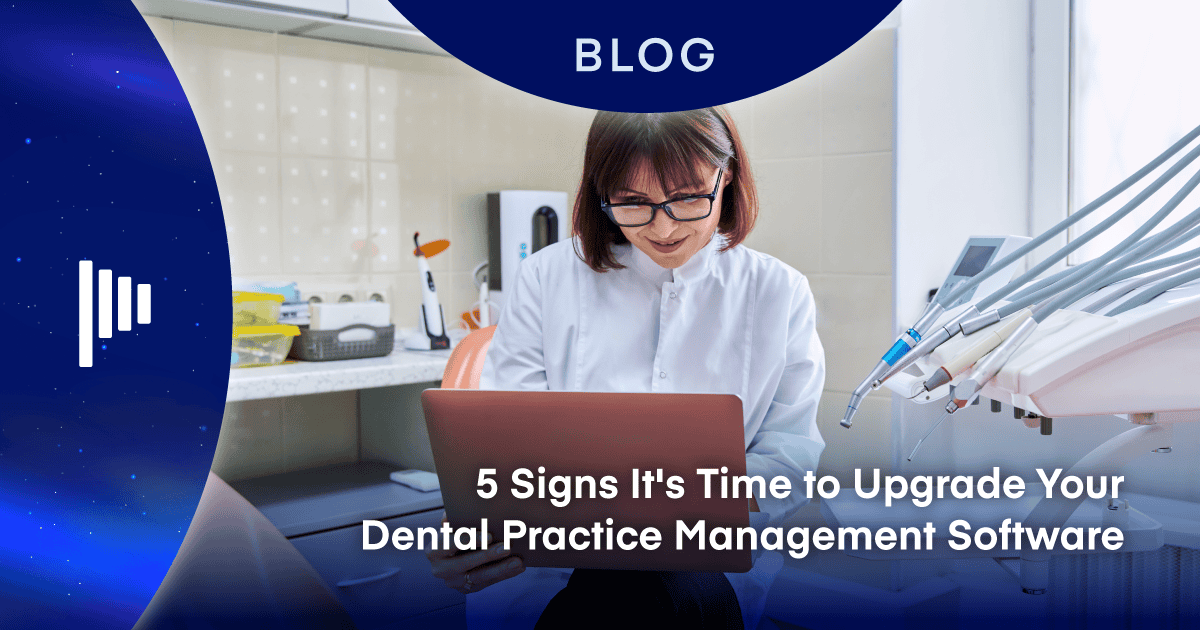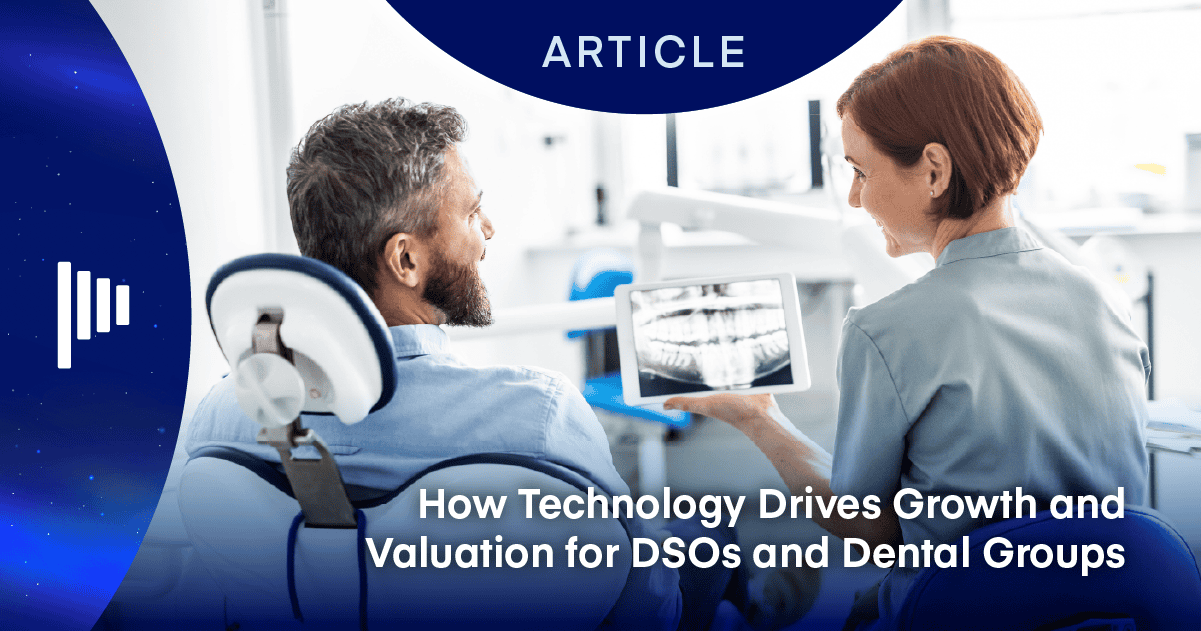5 Signs It’s Time to Upgrade Your Dental Practice Management Software

It’s common for dental support organizations (DSOs) and dental groups to outpace the capabilities of legacy software or server-based systems as their organizations grow. New acquisitions and a growing patient base can expose the limitations of outdated systems—resulting in stagnant growth, operational inefficiencies, and suboptimal patient experiences.
These issues are magnified by broader industry pressures, including rising overhead and staffing shortages. A recent Dental Economics survey found that 65% of practices reported higher overhead last year—part of a continuing upward trend. However, the report also noted that practices with the right systems in place were more likely to improve efficiency and maintain profitability despite cost increases.
These pressures make it even more important to assess whether your current dental practice management software supports your objectives—or if it’s time to audit your tech stack and consider an upgrade. Here’s what to watch out for to determine whether your system is aligned with your organization’s growth goals.
1. Your DSO Is Struggling with Disconnected Systems
If you’re juggling multiple systems and platforms to complete routine operational tasks like billing, imaging, scheduling, and patient communications, then it’s time to centralize operations. Disconnected systems are not optimal for growth—they require manual data entry across platforms, increase the risk of human error, and make everyday tasks more complex than they need to be.
Centralized dental practice management software helps standardize workflows across your organization and creates more efficient, consistent operations. When evaluating systems, look for features that support:
- Centralized scheduling, billing, and insurance verification
- Unified access to imaging, clinical data, and patient communication tools
- Shared access to real-time data across locations
- Reduced need for manual data reentry between systems
Solutions like Denticon practice management software consolidate these functions into a single platform, helping DSOs boost operations and maintain consistency across locations.
2. You Lack Access to Real-Time Data and Analytics
For DSOs and dental groups, easy access to real-time data is essential. Metrics such as accounts receivable, scheduling gaps, patient retention, staff productivity, no-show rates, and chair time offer a clear view into day-to-day performance and overall organizational health. If your team can’t quickly access these data points, your software may be limiting visibility into trends and slowing down decision-making.
Advanced dental practice management software provides real-time access to both patient and practice data. With an integrated solution, teams can monitor performance across locations through a unified dashboard. Look for features like:
- Real-time visibility into location-specific key performance indicators (KPIs)
- Centralized dashboards for financial, clinical, and operational data
- Customizable reports and user-specific data access
- Automated data updates to reduce manual tracking
Access to analytics empowers leadership to act quickly—whether it’s reallocating resources, adjusting schedules, or launching targeted patient retention efforts. Denticon practice management software includes built-in analytics capabilities that gives DSOs better visibility across clinical, financial, and operational functions, helping leaders act on insights with greater precision.
3. Your Dental Software Can’t Scale with Your Growth
Outdated systems and on-premise servers weren’t built to support growing dental organizations. As DSOs and dental groups add providers, locations, and patients, these traditional setups often fall short, leading to manual workarounds, fragmented workflows, inconsistent experiences, rising administrative costs, and increased risk to data security and compliance.
According to The U.S. Dental Management Practice Software report, the market size was estimated at $924 million in 2024 and is projected to grow at a CAGR of 9.1% from 2025 to 2030, highlighting the need for scalable practice management solutions to drive growth.
Cloud-based dental software is designed to support scalability at every level. In addition to centralizing operations and providing real-time access to data, scalable platforms should include:
- Customizable user permissions for various roles and teams
- Built-in security updates and compliance support
- Reduced IT overhead through automatic updates
- Elimination of physical server maintenance
- Real-time troubleshooting and vendor support
Dental practice management software built for scalability helps maintain continuity as your organization grows—without adding unnecessary complexity or cost. Planet DDS solutions are designed to support this kind of growth, offering flexibility and centralized control DSOs need to expand effectively.
4. Your Software Doesn’t Automate Essential Workflows
This sign can be easy to miss, especially for organizations that have long relied on manual workflows and traditional systems. Repetitive administrative tasks often become embedded in day-to-day routines, even when automation could free up time and improve accuracy.
A recent Dentaly survey revealed that approximately 35% of dentists have implemented AI in their practices, with 77% reporting positive outcomes from its use, indicating a trend toward automation in dental operations.
The automation capabilities of cloud-based practice management software help reduce manual work and support more consistent operations. Look for systems that automate:
- Appointment reminders and confirmations
- Insurance eligibility checks
- Billing and collections processes
- Routine financial or productivity reporting
By automating routine tasks, DSOs can reduce administrative overhead, increase internal efficiency, and improve the overall experience for patients and staff alike. Tools like Planet DDS Pay enable automated payment collection and reconciliation, further simplifying financial workflows.
5. Your Platform Doesn’t Integrate with Modern Tools
DSOs and dental groups require practice management software that can work effortlessly with other systems—such as imaging, communications, billing, and referral management—to create a unified operational workflow. If your tech stack lacks the flexibility to integrate with third-party tools, it may be time to consider a system upgrade.
When evaluating dental software, look for integration capabilities that:
- Connect with third-party tools like imaging, billing, and communications platforms
- Offer open APIs to support custom workflows and data sharing
- Sync data in real time across integrated systems
- Include built-in safeguards for secure data exchange
This approach helps simplify operations, minimize errors, and improve the overall experience for both staff and patients.
The Planet DDS Open API Program enables DSOs to connect their practice management software with a wide range of third-party applications—including those for revenue cycle management (RCM), marketing, and analytics—facilitating a more cohesive and efficient tech ecosystem.
Upgrade Your Dental Practice Management Software
As DSOs and dental groups expand, the systems that support them must keep pace. While legacy software may have previously met operational needs, current demands require more flexible, integrated, and scalable solutions. Not recognizing the signs of an outdated tech stack can lead to inefficiencies, unnecessary costs, and a diminished patient experience.
If these indicators resonate with your organization, it may be time to reassess your dental practice management software. Cloud-based solutions offer the tools necessary to centralize operations, enhance data accessibility, optimize workflows, and support sustainable growth.
Ready for a more modern, scalable solution? Explore how Planet DDS dental practice management solutions can help support your long-term growth.



